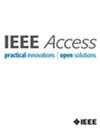Data-Driven Posture Control of Tensegrity Manipulator Based on Strut’s Inclination Angle
IF 3.4
3区 计算机科学
Q2 COMPUTER SCIENCE, INFORMATION SYSTEMS
引用次数: 0
Abstract
Tensegrity structures have been utilised in soft robotics due to their flexible and lightweight nature. However, unlike traditional robots, these structures lack joint angles, which makes it challenging to use conventional angle sensors, and thus estimating the posture of the robot remains a challenge. To overcome this, we propose a data-driven approach for posture control of a redundant tensegrity manipulator using inclination angles of all struts, these angles are calculated relative to the gravitational direction. Specifically, we train a simple feedforward neural network (NN) to approximate a mapping from the inclination angles to the control inputs with a conditioning layer-wise averaged pressures. This network acts as a posture controller, mapping the desired inclination angles to the corresponding control inputs with conditioning by average pressure in the layer. The desired inclination angles corresponding to the desired posture can be obtained by demonstrating the robot in a direct teaching manner. We used the tensegrity manipulator consisting of 20 struts and 40 actuators to validate our approach. The experimental results showed that the tensegrity manipulator can reproduce the desired demonstrated postures.基于支撑倾角的张拉整体机械臂数据驱动姿态控制
张拉整体结构由于其柔韧性和轻量化的特性已被应用于软机器人。然而,与传统的机器人不同,这些结构缺乏关节角度,这使得使用传统的角度传感器具有挑战性,因此估计机器人的姿态仍然是一个挑战。为了克服这个问题,我们提出了一种数据驱动的方法来控制冗余张拉整体机械臂的姿态,利用所有支柱的倾角来计算这些角度相对于重力方向。具体来说,我们训练了一个简单的前馈神经网络(NN)来近似从倾角到控制输入的映射,并使用逐层平均压力进行调节。该网络作为姿态控制器,将期望的倾角映射到相应的控制输入,并通过层中的平均压力进行调节。通过直接教学的方式对机器人进行演示,可以得到与期望姿态相对应的期望倾角。我们使用由20个支柱和40个驱动器组成的张拉整体机械臂来验证我们的方法。实验结果表明,该张拉整体机械臂能够再现所期望的演示姿态。
本文章由计算机程序翻译,如有差异,请以英文原文为准。
求助全文
约1分钟内获得全文
求助全文
来源期刊

IEEE Access
COMPUTER SCIENCE, INFORMATION SYSTEMSENGIN-ENGINEERING, ELECTRICAL & ELECTRONIC
CiteScore
9.80
自引率
7.70%
发文量
6673
审稿时长
6 weeks
期刊介绍:
IEEE Access® is a multidisciplinary, open access (OA), applications-oriented, all-electronic archival journal that continuously presents the results of original research or development across all of IEEE''s fields of interest.
IEEE Access will publish articles that are of high interest to readers, original, technically correct, and clearly presented. Supported by author publication charges (APC), its hallmarks are a rapid peer review and publication process with open access to all readers. Unlike IEEE''s traditional Transactions or Journals, reviews are "binary", in that reviewers will either Accept or Reject an article in the form it is submitted in order to achieve rapid turnaround. Especially encouraged are submissions on:
Multidisciplinary topics, or applications-oriented articles and negative results that do not fit within the scope of IEEE''s traditional journals.
Practical articles discussing new experiments or measurement techniques, interesting solutions to engineering.
Development of new or improved fabrication or manufacturing techniques.
Reviews or survey articles of new or evolving fields oriented to assist others in understanding the new area.
 求助内容:
求助内容: 应助结果提醒方式:
应助结果提醒方式:


